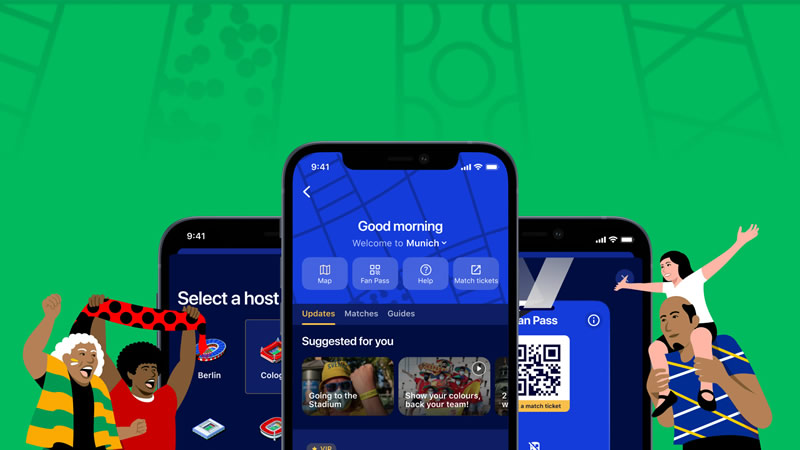UEFA has planned television and digital coverage of an exceptional broadcast and content creation infrastructure based in Germany, the territory of the European national team championship.

The soccer world is keeping a close eye on Euro 2024 as the big event capturing the interest of fans these days. At least that’s how it will be until the Copa America begins in the United States. Sports competitions will follow their dynamics, at their own pace, until everything comes to a head on the incredible Sunday, July 14, the day when the Euro 2024 final, the Wimbledon final and the Copa America final will coincide. The sports industry with live content, more alive than ever.
But these are still Euro 2024 days almost exclusively. To meet demand, UEFA planned television and digital coverage of an exceptional broadcast and content creation infrastructure based in Germany, the territory of the European national team championship.
Euro 2024 is broadcast to more than 200 territories by more than 130 UEFA broadcast partners, with an estimated cumulative live audience of more than five billion people. And millions more fans follow the tournament on digital platforms.
The broadcast operation requires 1,800 employees spread across the ten venues, and more than 400 at the International Broadcast Center (IBC) in Leipzig. This 20,000 m2 facility is the hub of the broadcast operations and is connected to the stadiums via a fiber-optic network.
The IBC also hosts 27 broadcast partners who have their studios, controls and offices there during the championship. The standard plan for each match involves 46 cameras, including high-speed and slow motion cameras. From the quarterfinals onwards, a crane-mounted camera is added for external shots.
More than 3,500 hours of content will be offered, including live matches and additional content such as highlights and special programs already generated by the host broadcaster that rights licensees can use. They can also access UEFA’s ‘Hive’ media hub with more than 170,000 clips available.
Let’s make a stop here. If 3,500 hours of soccer content seems like a lot for an event that lasts exactly one month, let’s contrast it with a multi-sport event like the Paris 2024 Olympic Games: 11,000 hours of content will be generated there for a competition that lasts 17 days. Practically three times as much.
Live audiovisual content is key, but coverage extends beyond television, radio and live streaming. The official UEFA EURO 2024 website and app offer detailed coverage from all ten championship venues. On the official social platforms, the full range of each platform’s products are used to promote the tournament and increase engagement with a focus on vertical videos and data-enhanced graphics.

UEFA somehow picks up the good practices of FIFA, which was disruptive in the digital ecosystem in two scenes: the abundant use of vertical videos and the creation of content for social media with backstage monitoring of each of the participating teams.
Technological innovation for broadcasting also has Euro 2024 as a new experimental field. For example, in Poland, the rights owners generate broadcasts on YouTube where users can customize the broadcast with game data added to the original transmission. This is the famous manager mode, which shows a graph with the positions of the teams, the speed of the shots and the percentage of success that a shot at goal can have.
A gamified era with game metrics that increasingly resembles video games and that over time show that the new generations are willing to accept as the standard way to watch soccer.
More than 200 territories receive the broadcast of the championship
More than 130 broadcast partners for TV and digital platforms
Cumulative live audience estimated at more than 5 billion viewers by the end of the tournament
1,800 employees at ten broadcast venues
400 employees at IBC in Leipzig
20,000 square meter IBC with studios for 27 broadcast partners
46 cameras per match
More than 3,500 hours of content
170,000 clips on the ‘Hive’ server, UEFA’s content hub.